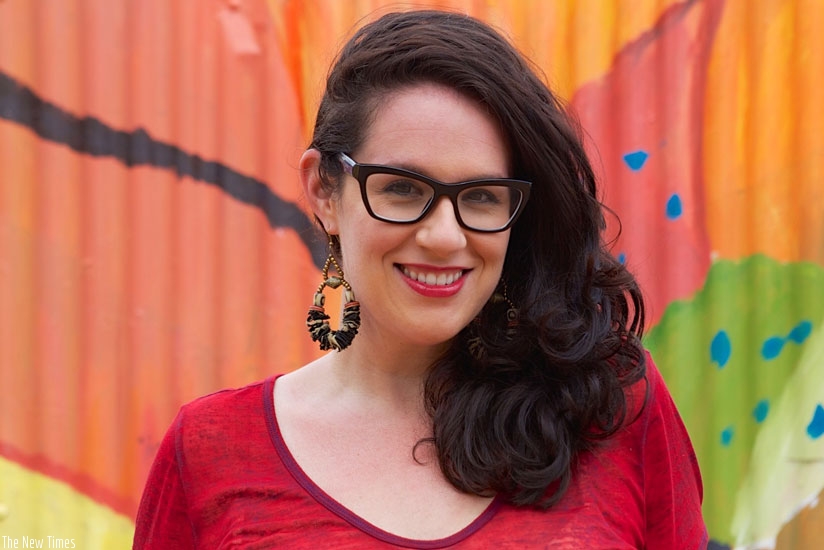Judith Kaine is the founder and Creative Director of Kurema, Kureba, Kwiga (To Create, To See, To Learn), a public-art project that uses visual and street arts to highlight social issues in Rwanda, bringing together contemporary Rwandan artists and community-stakeholders. She talks to Sunday Magazine’s Moses Opobo about it.


Judith Kaine is the founder and Creative Director of Kurema, Kureba, Kwiga (To Create, To See, To Learn), a public-art project that uses visual and street arts to highlight social issues in Rwanda, bringing together contemporary Rwandan artists and community-stakeholders. She talks to Sunday Magazine’s Moses Opobo about it.
Away from Kurema, Kureba, Kwiga, who is Judith Kaine?
I’m a fifth generation American of Jewish origin. My family emigrated to the US many generations ago.
I’m interested in things that bring people together both professionally and personally. I’m an extrovert through and through. I derive my energy from being around other people.
Are you an artist?
I don’t think of myself as an artist but rather as a creative person. My mother is a designer and my father is a physician so I took after the two of them combined.
I’ve always created things from the time I was a child. When I was at university I studied visual arts and I have a degree that is based on photography but also Psychology and Sociology and so my interest in the arts has always been about how the arts are used and employed in different dimensions. It’s never been about just fabricating something.
When did you come to Rwanda?
I moved to Rwanda in 2013. I was doing a short consulting job with the ministry of Education as my background is in Public Health, Public Education, and International Development. I have two Masters Degrees –International Affairs and Public Health.
I worked for a company in Sierra Leone for two years and then that project ended and they sent me here. So I did not choose Rwanda, Rwanda chose me.
I had come to Rwanda for the first time in 2007 as a tourist and that time I lived in Uganda.
I never really planned to stay or to live here but I’m not complaining.
Starting Kurema, Kureba, Kwiga
I had this job for about six months and ultimately it ended and I was looking for new work and at that time I met some artists and was really inspired by the work they were creating. But it was kept within a gallery context and I thought it was really interesting that for the six months I had lived in Rwanda I’d not met any artists or seen any art and as a person who is interested in the arts I felt bad that it was so hard to access that art. I found that sad given the immense talent we have in this country.
What I took away from that is that the demand for art is still low and that’s partly the reason why most of the visual art you see around here is tourist oriented as opposed to a Rwandan market.
That was one of the initial inspirations for Kurema Kureba Kwiga. The question was how do we promote the arts? How do we get people involved in our art? How do we cultivate local demand?
Because of my background in Public Health we came up with a project that was linked to the use of arts in talking about Public Health issues. We were lucky to partner with the Ministry of Health and the Rwanda Biomedical Center to develop that project which was focused on fighting against HIV related stigma.
From that starting point we created our first piece of public art that is not art in the gallery but out in the streets, in Remera at the Rwanda Biomedical Center wall in December 2013. It’s a large painting of an Intore dancer with a message about fighting HIV together as a country.
On public art:
I think that public art can be art in any medium and in any form but the thing that distinguishes it is that it’s designed to be viewed by the public and it’s designed with site specificity in mind.
The specific site for the art is part of the concept that underscores it. When you talk about public art you are not necessarily making it to be just in someone’s home. You are making it to be outside so that different people can access it.
That’s my concept of public art.
We do work that is both street art, activist art as well as public art at the same time.
From that starting point of making work that was focused on specifically addressing HIV related stigma in 2013 we wound up evolving to address a wider range of social issues.
We were very informal at the beginning but we ultimately registered as a social enterprise so that we could work on this idea of developing the visual arts sector and promoting the arts domestically and creating opportunities for the development of the arts as a business while still maintaining this contact with the public by sharing.
What makes our enterprise social is that our profit is measured by social change. Our bottom line is not about making a tone of money but rather creating impact and delivering through a market model.
We are not operating as a charity but with different strategies that finance our work in different ways. Some of our work is funded by grants and sponsorship but we also do strategic partnerships whereby we work on behalf of companies so I would say it’s a mixed market model.


